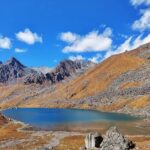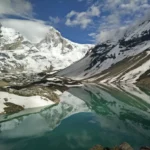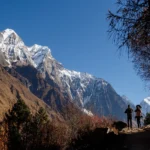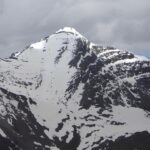There are two different seasons for Goechala Trek in Sikkim. Best time to visit Goechala depends on your interests and preferences. Spring season (March and April) is the best time to visit Goechala and witness the vibrant rhododendron blooms. Both seasons have their charm and beauty.
Goechala turns into a colourful forest with age-old rhododendrons blooming in most parts of the trail in spring. With rhododendrons blooming in shades of pink, red, white, and yellow, the entire path turns into a riot of colours in spring.
Autumn months of September to early November are the best times to visit Goechala if your interest lies in indulging in the grandeur of big mountains and soothing autumn hues. September to November is known for offering magnified views of snow-clad mountains.
June to August are not recommended. It rains heavily in the region often causing landslides and roadblocks. The campsites become tricky to navigate, and the forest area is infested with leeches.
Here is a detailed season-wise guide to Goechala Trek. Know more about the best time to visit Goechala trek and plan your trip according to your interests and preferences.
Goechala Trek in Spring (March and April) – Best Time to Witness Vibrant Flora
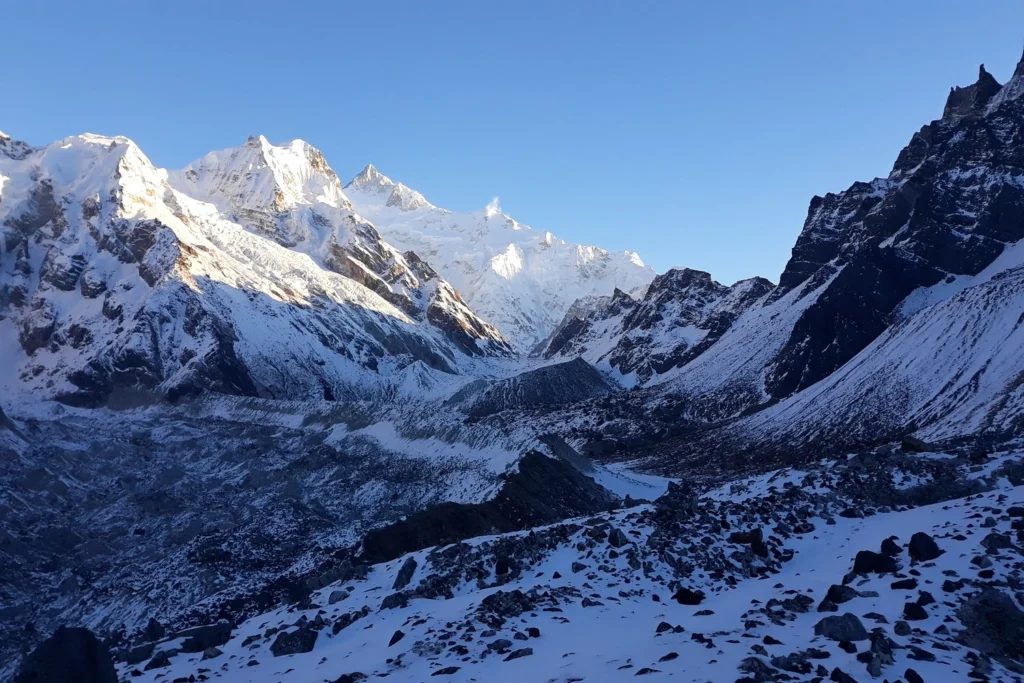
Spring season begins in mid-March and continues till April. The snow on the trail recedes, inviting trekkers to Goechala. It is also the best time to experience rare species of birds and animals. As winter makes its way out of the trail, the vibrant wildflowers paint the entire path in vivid colours.
Goechala Trek in March
Goechla season begins in March. At higher campsites, there will be abundant snow in March. The wildflowers at lower reaches begin to sprout. You will walk along the dense forest, floating clouds and thrilling undulated trail.
Goechala Trek in April
April is the perfect month if your goal is to walk under the thick canopy of rhododendron-laden trees. Right after Tshoka, you will start witnessing the traces of Rhododendron. The forest you walk along is dense and at some places, you will only see scattered sunrays peeping through.
April is also the best time to visit Goechala and witness the beauty of mighty Kanchedzonga and other peaks like Mt Pandim.
Goechala in Summer (May and June)
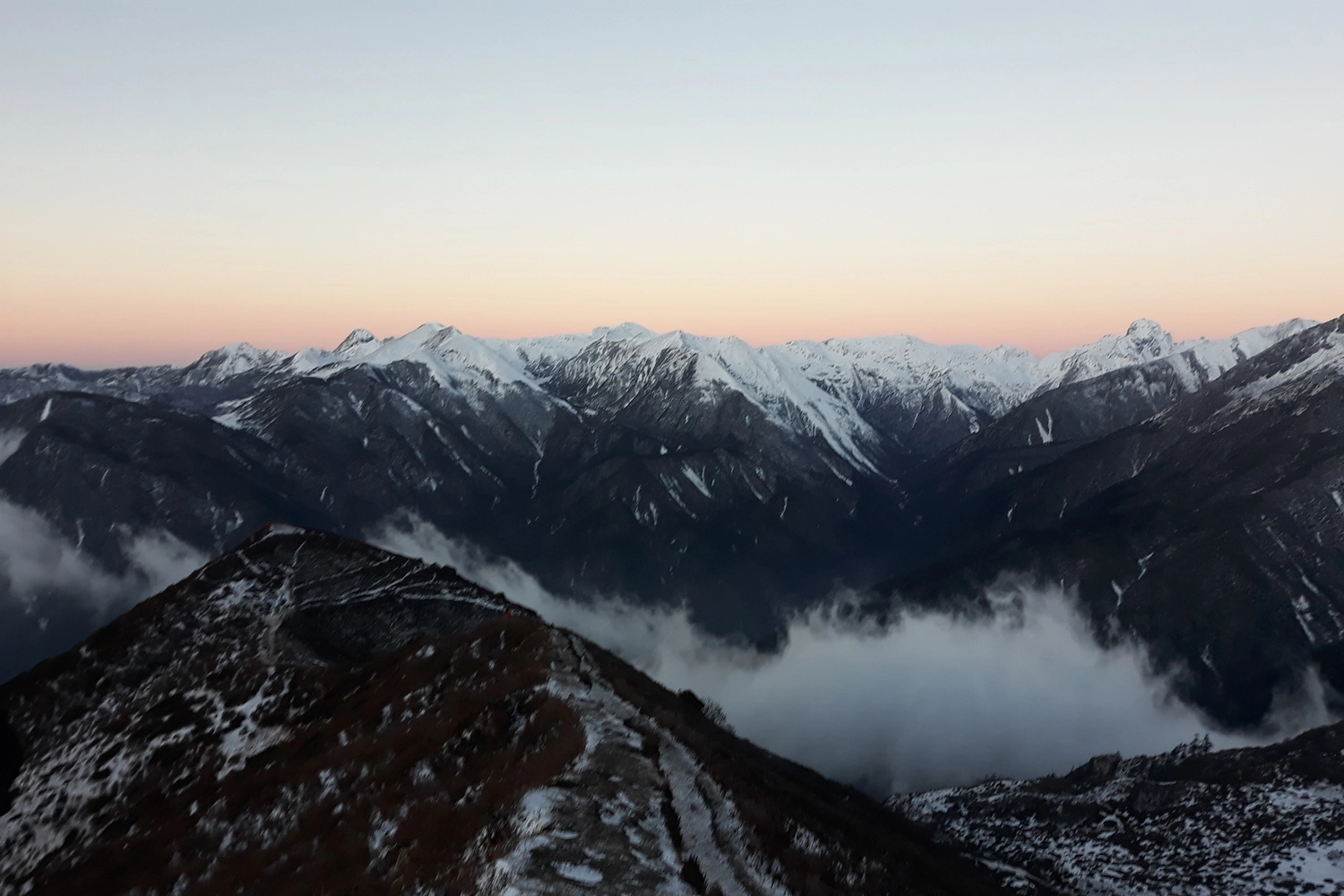
Summer season begins in May in Goechala and wraps up by early June. Goechala houses many indigenous bird species and summer is one of the best times to catch glimpses of these birds. The season offers the best of winter snow and the soothing hues of the warm and cosy summer season.
Goechala in May
Goechala in May is warmer than in April. This is also the month when you are likely to deal with mild and scattered showers. During this time, vibrant wildflowers and rhododendron blooms add vividness to the trail.
Goechala in June
The vividness of rhododendrons wither away in June. You will walk in a tranquil forest covered with oaks and pine. A splash of vivid Rhododendrons is amiss if you trek to Goechala in June. The season is wrapped by the end of May.
Goecahla Trek in Monsoon – Not recommended
Monsoon begins in the region as early as June and continues till August. Torrential rain in the Northeast often causes flash floods and roadblocks. Monsoon’s unpredictable weather and danger of landslides restrict the uninterrupted flow of batches in Goechala.
In addition to this hurdle, the trail to Goechala is heavily infested with leeches during the rainy season. It is suggested to avoid trekking to Goechala in June, July and August.
Goechala Trek in Autumn (September to November) – Perfect for Panoramic Mountain Vistas
After the monsoon season makes way for the autumn hues, Goechala begins to receive trekkers in September. People come here to bask in the glorious autumn shades and mesmerising summit views between September and November.
The season is the best time to visit Goechala trek to indulge in panoramic mountain vistas. It is also the perfect time for the magical sunrise and sunsets Goechala is known for.
Goechala in September
Goechala in September remains free from monsoon fog, and a hazy trail. By September the monsoon rain clears the dust and haze off the trail. You will have a clear blue sky with towering mountains to keep you company.
Goechala in October
By October, the Goechala trail and campsites completely embrace the autumn hues. As forest evade the splash of rhododendron blooms, rustic colours in contrast with the clear blue sky add to the beauty of the trek.
Soothing autumn hues beautify the trail to Dzongri Top. You witness shrubs along the trail with white mountains in the backdrop, picture-perfect Goechala in October.
Goechala in November
Goechla in November is equally beautiful. You will have remains of autumn hues. The view of the mountains continues to charm you. Goechala is one of the rare treks in India where mountain views can compete with some of the hikes in Nepal.
Goechala in Winter (December to February) – Recommended For Experienced Trekkers
Goechala in December will be tough to traverse on snow-covered trails. The upper campsites start receiving snowfall in mid-December making it difficult to navigate the trail.
After December, Dzongri Top, and campsites beyond Tsokha remain covered in snow. If you want to trek to Goechala in winter, you need to carry mandatory equipment for the trek. Slippery slopes, snow-covered campsites, and extreme trekking conditions make winter a difficult time to explore the trek. Trekking to Goechala in winter is suggested only for experienced trekkers.
Goechala Trek Highlights
Goechala trek in the state of Sikkim is one of the challenging experiences that offers a grand view of big mountain peaks. A long and arduous trail, the trek takes you to the Kanchedzonga National Park, a UNESCO World Heritage Site. Goechala is no doubt a challenging trek as the trekking days are long, and the altitude gains quickly. The hard climb is compensated by the enchanting landscapes throughout the trail.
The wilderness of the dense forest, the spellbinding rhododendron forest, and a portion of trail dotted with wooden logs are what you witness on your hike to Goechala. As you reach the summit, the glistening Samiti Lake and grandeur of mighty Himalayan peaks, you derive the utmost contentment while gazing at the breathtaking beauty of mountains.
Yuksom is the base camp of Goechala Trek is Yuksom, in West Sikkim. You will meet the OWLS team on Day 1 of your trek at the OWLS pick-up point in Bagdogra. The distance between Bagdogra and Yuksom is around 150 km. It takes about 6-7 hours to reach Yuksom. Goechala is a difficult trek. It spans over 10 days and climbs to an altitude of 15,1000 ft above sea level. Come prepared to tackle challenging trails and altitudes above 15,000ft.

